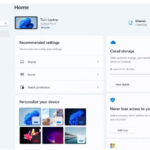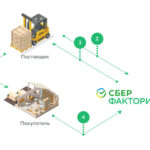Год выпуска: 2012
Производитель: CBT Nuggets
Автор: Greg Shields
Продолжительность: 10:59:17
Тип раздаваемого материала: Видеоурок
Язык: Английский
Стоимость: 1999 рублей
Описание:
VMware's vSphere 5 is an enterprise-ready virtualization solution. Trainer Greg Shields will introduce you to VMware and vSphere, preparing you for the VMware vSphere 5 certification, Certified Professional 5, or VCP5, exam. You won't just have what it takes to take the exam, you'll learn career-critical virtualization skills in this Nugget series.
Related area of expertise:
Virtualization
[wpspoiler name="Подробное описание" ]
1. Introduction to VMware, vSphere, and the VCP5 (00:35:48)
With this first Nugget, Greg will familiarize you with his teaching style and the products to be discussed. Get to know VMware, its vSphere platform, and the topics of greatest importance in this kick-off Nugget.
2. Identify vSphere Architecture and Solutions (00:19:29)
Any virtual environment is comprised of a lot of moving parts. vSphere 5 is no different. With ESXi hypervisors, vCenter Server and Client management tools, and everything in between, this Nugget prepares you for understanding how the entire solution fits together.
3. Install and Configure vCenter Server (00:26:26)
With all the preparatory work out of the way, our first job is getting vSphere’s management studio installed and ready for ESXi hosts. That studio, the vCenter Server, is the central location for configuring and controlling almost every facet of your vSphere environment. You’ll get it installed and configured in this Nugget.
4. Install and Configure VMware ESXi (00:25:38)
With vCenter ready for action, next up is preparing the hypervisors themselves for running virtual machines. We won’t be ready for creating our first virtual machines for a few more nuggets, but at this point we'll run through the installation and initial configuration of ESXi. You’ll see how this almost appliance-like hypervisor gets installed, how its networking is prepared, and how it gets connected into vCenter.
5. Configure vNetwork Standard Switches & vSS Policies (00:26:00)
If you’re new to virtualization, an ESXi server will be unlike almost any other server you’ve worked with before. Able to support trunked network connections just as easily as those at your network’s access layer, you’ll need to know how to correctly work with ESXi’s vNetwork Standard Switches. That knowledge, along with a full explanation of all its configuration options, are in this Nugget.
6. Configure Shared Storage for vSphere (00:22:59)
Storage is the next configuration before we can create virtual machines. And in the vSphere virtual world, that storage is shared storage. Unlike the direct attached disks that are connected to a server’s hardware chassis, shared storage means SAN storage. You’ll be configuring exactly that shared storage for later use by your virtual machines in this Nugget.
7. Create and Configure VMFS Datastores (00:21:11)
Configuring the connection to storage is but the first step in the process. Making that storage production-worthy requires redundancy and multiple paths. With the connection ready, you also require extra work in creating VMFS datastores. Those datastores are the file system in which your virtual machines will operate. You’ll also get an introduction to some of vSphere’s newest technologies like User-defined Storage Capabilities and Storage I/O Control.
8. Create and Deploy Virtual Machines & vApps (00:30:12)
Only after ESXi’s operating system, its vSwitches, and its shared storage are configured can you begin creating and working with virtual machines. In this Nugget you’ll get that opportunity. You’ll also learn about how virtual machines can be aggregated together into vApps for easier management, as well as how to P2V convert a physical (or other hypervisor’s virtual) machine into a VM that’s ready for vSphere.
9. Administer and Migrate Virtual Machines and vApps (00:34:27)
You created and deployed virtual machines in the last Nugget; in this one you’ll be administering their more advanced settings. Those include VM options, resource controls, virtual disk provisioning formats, and your very first experiences with VMware’s much-lauded vMotion capabilities.
10. Configure VMware Clusters and Resource Pools (00:44:09)
vMotion is an exciting new tool for keeping virtual machines highly available. But vMotion by itself is only one part of the solution. Wrapping around vMotion are a series of monitors and an availability model that keeps VMs best distributed across available hosts. It also returns them back to service quickly after a failure. VMware HA and DRS all source from VMware Clusters. Constraining VM resources is accomplished with Resource Pools. You’ll learn about both in this deep-dive Nugget.
11. Manage Virtual Machine Clones and Templates (00:18:42)
A virtual machine that’s powered off is nothing more than a file on disk. Even one that’s powered on, with the right tools, can be “copied and pasted” just like a file. That ease of replicating VMs feeds directly into this Nugget on managing VM clones and templates. You’ll learn the best practices and the step-by-step to cloning your virtual machines and starting their lives via “golden image” templates.
12. Backup and Restore Virtual Machines (00:22:08)
Every IT workload requires backups, even if you hope to never have to resort to restores. Yet virtualization has a tendency to complicate backups even as it makes them better for restorations. You’ll learn the science behind virtualization’s multiple backup perspectives, and then dig into VMware’s Data Recovery Appliance to see how VMs can be backed up and restored in vSphere.
13. Update and Profile ESXi Hosts (00:26:20)
Everything that makes up an ESXi host is contained within its files. That file-based nature to ESXi’s operating system makes it easy to do configuration control – if you have an automated solution to gather all the settings that make sense. The tool to do so is vCenter Server’s Host Profiles. Watch this Nugget and you’ll quickly be profiling host configurations, comparing those profiles to other hosts, and ensuring that your entire environment is perfectly baselined to your exacting specifications.
14. Configure vNetwork Distributed Switches & vDS Policies (00:22:39)
vNetwork Standard Switches might work great when you’ve got just a few hosts, but they suffer from the fact that each host requires individual configuration. For larger environments, or those that want assured vSwitch configuration similarity, the answer is vNetwork Distributed Switches. These special switches operate at the datacenter layer, and provide a policy-based approach for ensuring every ESXi host’s networking is correct.
15. Secure vCenter Server and ESXi (00:16:56)
The only thing with vSphere that’s more important than backups is security. You’ve got to make sure your servers are patched and backed up for sure, but you’ve also got to ensure that they have the right security settings. Also important is delivering precise permissions to your fellow IT professionals (and even those special individuals outside IT who need access). You’ll learn all this in this Nugget’s security-focused conversation.
16. Plan and Implement VMware Fault Tolerance (00:17:12)
What do you do when a vSphere Cluster’s HA just isn’t enough? What do you do when even a second of downtime is too long? That’s when VMware Fault Tolerance becomes your best friend. By creating two virtual machines that operate in lock step with each other, FT ensures that any host failure won’t impact a protected VM. FT-protected VMs immediately come online with incredible speed.
17. Configure the vSphere Storage Appliance (00:21:03)
Don’t have a SAN and don’t want to buy one? Still want all the high availability features of vSphere? The vSphere Storage Appliance provides one option that might be of use. While it arrives with an array of limitations, this first-generation appliance can indeed create a highly-available vSphere environment without needing shared storage.
18. Perform Basic vSphere Troubleshooting (00:17:22)
Even the best run vSphere environment occasionally experiences problems, and when those problems occur, it’s your job to track them down. That’s why this entire Nugget is dedicated to troubleshooting ESXi. While the actual mapping between behaviors and resolutions is perhaps best left for the vSphere documentation, this Nugget will show you the tools you have at your disposal for tracking down big problems.
19. Monitor vCenter and Administer Alarms (00:28:13)
Yellow and red lights are never a good thing when they’re seen in a solution’s management console. But sometimes those lights aren’t well tuned. Other times you might just prefer to turn them off. You’ll learn how to tune vCenter’s alarm structure in this Nugget. With the information you learn here, you’ll know that every warning light has meaning.
20. Plan and Perform vCenter Server and ESXi Upgrades (00:14:49)
The upgrade process in vSphere 5 gets easier than ever with new and improved technologies like vCenter Update Manager and Auto Deploy. But even with these tools at your disposal, you still need the right set of steps to get your upgrade completed successfully. You’ll get exposed to the tools and learn the proper steps in this final Nugget.
[/wpspoiler]


